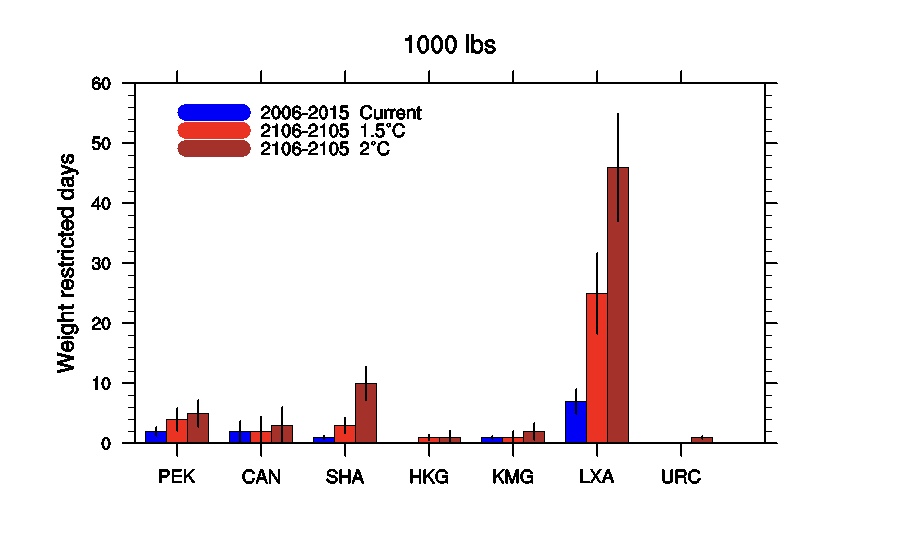State Key Laboratory of Numerical Modeling for Atmospheric Sciences and
Geophysical Fluid Dynamics (LASG)
Institute of Atmospheric Physics, Chinese Academy of Sciences

Vol. 6/No.6 July 2018
[Climate change] Impact of 1.5°C and 2.0°C Global Warming on Aircraft Takeoff Performance in China
Associated with global warming, climate extremes such as extreme temperature will significantly increase. Adaptation to the observed climate change has been a challenge to the society including the aviation sector. Understanding how climate change will impact the airflights is important to the planning of future flight operations.
In December 2015, the parties of the United Nations Framework Convention on Climate Change (UNFCCC) had signed the Paris Agreement, which stated a long-term goal for "2°C Global Temperature Target" and pursued efforts “to limit the temperature increase to 1.5°C above pre-industrial levels ”.
Recently, Prof. Zhou Tianjun and his colleagues from the Institute of Atmospheric Physics (IAP) of the Chinese Academy of Sciences, along with Prof. Liu Haiwen from the Civil Aviation University of China investigated the impacts of 1.5 and 2 degree’s global warming on the aircraft takeoff performance in China using a unique climate projection data from an international collaboration project named HAPPI. It is found that the mean summer daily maximum temperature, which is a major factor that affects the flight through changing the aircraft’s takeoff weight, will increase significantly with magnitude less than 1.5°C over most parts of China except for the Tibetan Plateau. The half a degree additional global warming will lead to a higher extreme temperature in the arid and semi-arid western China, the Tibetan Plateau and northeastern China, while the change in eastern China is weak. Five airports including Beijing, Shanghai, Kunming, Lasa and Urumqi will see ~1.0°-2.0°C (1.4°-3.0°C) higher daily maximum temperature under 1.5°C (2.0°C) scenario. The half-degree additional warming will lead to a shift toward higher extreme temperature at these five sites. For both 1.5° and 2.0°C scenarios, the number of weight-restriction days will increase significantly at 3 airports including Beijing, Shanghai, and Lasa. Urumqi will witness an increase of weight-restriction days only in 2.0°C future.

Figure 1 Changes in summer daily maximum temperature in the ECHAM6.3 100-realizations mean in a warming world relative to the current decade. (a) for 1.5°C warming world and (b) for 2.0°C warming world.

Figure 2 Number of 1000-lb weight-restriction days per year in the current decade (2006-2015, blue) and the future decade (2106-2115) under 1.5°C (red) and 2°C (dark red)warming. The black lines represent the standard deviation of the number of weight-restriction days per year between the 100 ensemble members.
Citation:
Tianjun Zhou, Liwen Ren, Haiwen Liu, Jingwen Lu. Impact of 1.5 °C and 2.0 °C global warming on aircraft takeoff performance in China. Science Bulletin, 2018, 63(11): 700-707 https://doi.org/10.1016/j.scib.2018.03.018
Contact: ZHOU Tianjun, Zhoutj@lasg.iap.ac.cn
E-mail: lasg_newsletter@lasg.iap.ac.cn
Editors: Chuanyi Wang (wangcy@lasg.iap.ac.cn), Kangjun Chen(ckj@lasg.iap.ac.cn)